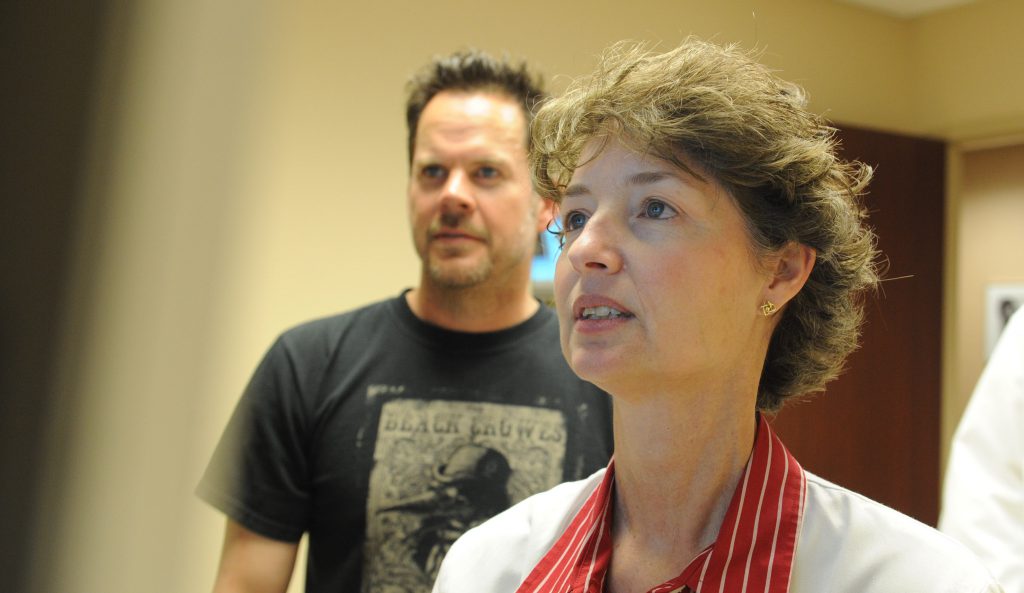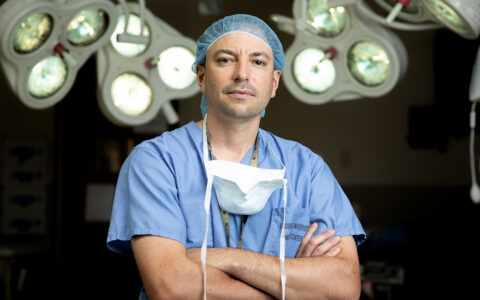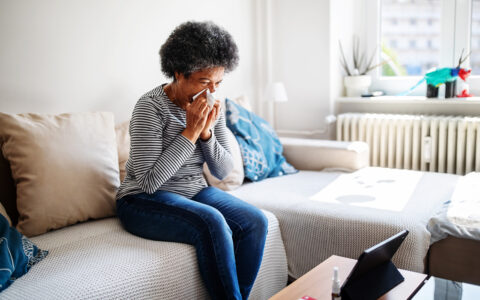Gaelyn Garrett, M.D., joined the Vanderbilt Voice Center in 1994, four years after the center was formed to serve the strong demand for professional voice care in Nashville, “Music City.” Today, as the center’s senior executive medical director, Garrett has helped the program achieve national leadership through embracing clinical innovation, new technologies and a unique relationship with local performing professionals.
“We’ve learned treatment takes more than just a straightforward medical approach,” said Garrett. “You need to look at a voice disorder from a holistic standpoint. Figure out medically what’s wrong, but also take a behavioral perspective. What got the patient there, and what issues predated them presenting their current symptoms? It’s been essential to develop a multidisciplinary team including colleagues from various specialties.”
Building a Top Voice Care Program
Vanderbilt’s voice center, the brainchild of Robert Ossoff, M.D., now houses a team of more than a dozen experts, including otolaryngologists, speech pathologists, singing specialists, physical therapists and other specialized staff. According to Garrett, building this multidisciplinary team with dedicated specialty training in laryngology or voice work has been just as essential as adopting the latest technologies.
“All of our physicians have specialty training, and they’ve all done fellowships – an extra year of training specifically in voice or laryngology,” said Ossoff. “In addition, our speech language pathologists have done subspecialty training specifically in voice. Beyond that, we have access to colleagues in physical therapy, gastroenterology and pulmonary medicine. Those resources are really necessary to get the maximum evaluation.”
Garrett says continuing to foster the center’s ties with the Nashville music community has been another key to success. The center’s local outreach includes a strong educational component focused on preventive care of the voice.
“One of the most positive impacts we’ve seen in the community is education among music industry professionals,” said Garrett. “When I started my fellowship in 1994, there was a lot more smoking and overuse of the voice, both before and after performances. I think the education we’ve provided to the music industry has helped encourage more favorable behaviors.”
The center’s educational outreach has included voice workshops to industry groups and a partnership with the Grand Ole Opry, as well as annual training courses for physicians and speech pathologists about caring for professional singers.
The Changing Landscape of Voice Care
“In my early career here, we saw more abnormalities on the vocal folds themselves – phonotraumatic lesions – such as nodules, polyps and cysts. Now we’re looking more at musculoskeletal issues.”
Along with seeing better self-care among music professionals, the center has experienced changes in the types of voice conditions needing treatment.
“In my early career here, we saw more abnormalities on the vocal folds themselves – phonotraumatic lesions – such as nodules, polyps and cysts,” said Garrett. “Now we’re looking more at musculoskeletal issues. Posture is a big thing – how the performer or songwriter is holding their guitar or playing the keyboard. And exercise. They may be overdoing it with weight lifting or free weights, building muscles that can have adverse effect on voice behavior.”
Translational research undertaken at Vanderbilt and elsewhere is also changing standard of care for voice rehabilitation. For example, Vanderbilt has re-evaluated its voice rest protocols due to its own translational research. “When I came here as a fellow, we prescribed voice rest for two weeks after surgery,” Garrett said. “Now we’re reducing that to three to six days, based on our own research. We’ve discovered that some of the positive healing factors are produced more with movement.”
Another evolving focus is predictive models to better understand risk for voice disorders. “Our researchers are looking at how to predict which artist starting their career is going to have problems,” said Garrett. “Not everyone will see a polyp develop because of overuse or misuse. How can we predict that? How can we try to counsel young artists appropriately?”
Treating the Whole Patient, Not Just the Voice
Developing a treatment program combining advanced diagnostic technologies and multidisciplinary team assessment, including input from physical therapists, has empowered a more patient-centered approach to voice care. Garrett says this is especially true for patients with conditions of uncertain diagnosis.
“Where we’ve really moved forward is the patients where you don’t see anything obvious when you do the vocal fold exam in the office,” said Garrett. “That goes back to looking at the musculoskeletal system. Vanderbilt has pioneered in that area within the past five to seven years. In the past, when you didn’t see anything, you might overtest or overtreat. You would do certain radiographic testing. You would check for acid reflux, and acid reflux is something that I think has been overly diagnosed in the past related to voice disorders. Now, the collaboration we have with our physical therapists has opened up a completely new avenue of care.”
Looking ahead to the center’s future, Garrett still feels “Music City” is the perfect setting to further innovate in professional voice care. “The connection we have with Nashville’s Music Row has been so positive… We’ve had close collaborations with many different music organizations in town. We all want their artists to be here for the long term.”





